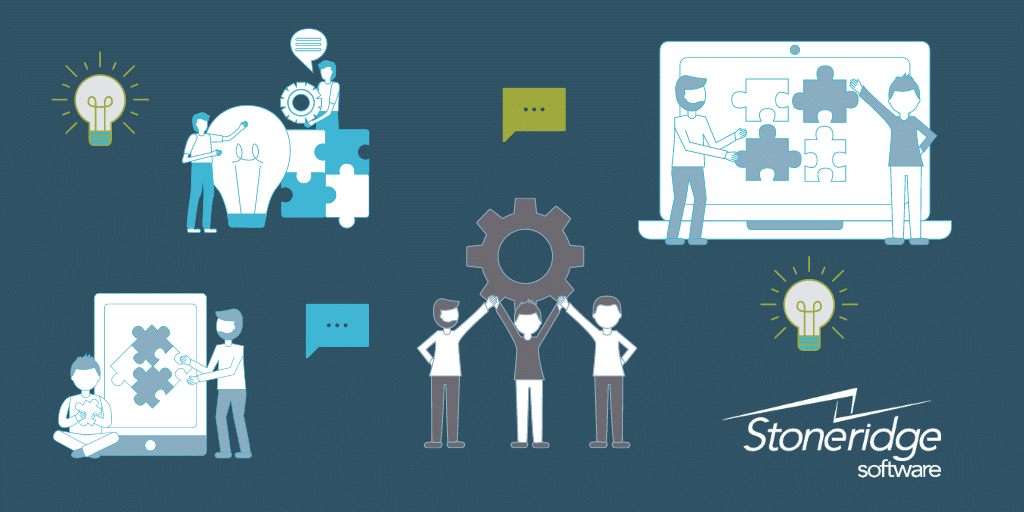Employee Experiences with an ERP Implementation – Opportunities for Input
The next installment of my six-blog-post series will cover the third recommendation made for company leadership generated from my research into employee experiences with ERP implementation projects. The motivation for this research originated from an alarming statistic that companies will traditionally see an increase in employee turnover during and shortly after an ERP system implementation, therefore my objective was to understand employee experiences with ERP implementations and whether there are factors related to retention and satisfaction that companies should be mindful of during that process.
For reference, the first two recommendations thus far have been:
- Recommendation 1 - Recognize that ERP transformations re-design jobs, and proactively maintain or add elements to jobs that are intrinsically motivating.
- Recommendation 2 - Ensure that excellent project management skills are practiced throughout the implementation process.
Continuing with the five sets of employee experiences that were gathered, I continue on to the next recommendation:
Recommendation 3 - Provide mechanisms for employees to participate with, and provide input on, the project and related decisions.
Two common themes that surfaced from the interviews included desires for input and involvement in the projects and related decision-making. The third recommendation for company leadership undertaking an ERP implementation project is to provide mechanisms for employees to participate with, and provide input on, the project and related decisions.
In one of the interviews, Chris expressed frustration that decisions regarding his warehouse personnel and future processes were being made by project team members without his input or expertise. He often questioned who made those decisions, and why he was not included in those conversations as he inevitably would be responsible for their implementation. He described this experience:
“This project really had a negative impact [on me] since day one… there were so many things that were done wrong or weren't thought through all the way or decisions that were made about my team and how they were going to do their jobs, without any involvement from me or input from any of us. It just seemed like everything was being decided on behind closed doors, and we'd just have to deal with it.”
In another interview, Jenny expressed confusion as to why her company agreed to implement their ERP system without the input of departmental leaders and further described how employees were angry for not having a voice in that decision. Miles, furthermore, discussed a situation in which, without his knowledge, his company moved in the opposite direction regarding a plan that had been agreed upon and which he had been involved in developing. Overall, Kim, Chris, Jenny, and Miles all discussed ways in which they felt they could not engage in discussions about their needs and the future states of their departments, contributing to feelings of doubt, anxiety, and frustration.
Job Redesign
ERP implementations often involve some form of job redesign to better align human processes with new system functionality, and this job redesign can create significant challenges for employees. As many of the participants shared feeling disconnected from opportunities to provide feedback or engage in decision-making, their reactions are understandable given the changing nature of their work during the implementation. Research by Hackman and Oldham established that a great deal of decision-making and coordination may be required during this job redesign process; problems may arise due to insufficient knowledge, expertise, and input about how to handle new and expanded work responsibilities, and prior work experiences for employees may have given them little opportunity to exercise or improve their skills.
Further research has also illustrated that feeling involved in one’s job, in areas of task engagement and job commitment, is generally considered to be an important facet of the psychological “state” of engagement with a company. The restructuring of an employee’s work or job from significant organizational changes, as common with ERP implementations, may create overwhelming challenges for some -- leading to lower job satisfaction. Therefore, employees will have a higher level of satisfaction with their job and greater levels of organizational commitment if they believe they are able to participate in decisions and plans that personally affect them.
Employee Involvement
This is not to suggest that companies can be run like a democracy with every employee having weighed in on every decision, but there are mechanisms to implement the values of this concept on a smaller scale.
Some strategies to achieve this can include identifying heavier end-users by functional area and organizing them into collaborative teams with which core team members can engage to gain input and feedback on decisions and processes. These employees can be those that have an intimate knowledge of their respective departments to enable them to field their concerns and needs. By involving employees in meaningful ways regarding their post-go-live world, they’ll have a better recognition that they were heard and that their expertise, history, and value were respected. This level of involvement may not be as extensive as those on the core team, but it will allow employees to feel they were able to provide input on key decisions that will ultimately have an impact on their future job tasks and responsibilities.
These strategies for involving employees in these areas, such as providing information to employees, soliciting feedback, and involving employees in decision-making are effective techniques that help employees experience higher meaningfulness, self-determination, and competence at work.
References used in this research:
Huang, S.‐M., Chang, I.‐C., Li, S.‐H., & Lin, M.‐T. (2004). Assessing risk in ERP projects: identify and prioritize the factors. Industrial Management & Data Systems, 104(8), 681-688.
Hackman, J. R., & Oldham, G. R. (1980). Work Design in the Organizational Context. Research in Organizational Behavior, 2, 247-279.
Macey, W. H., & Schneider, B. (2008). The Meaning of Employee Engagement. Industrial and Organizational Psychology, 1, 3-30.
Xia, Y., Zhang, L., & Zhao, N. (2016, September). Impact of Participation in Decision Making on Job Satisfaction: An Organizational Communication Perspective. Spanish Journal of Psychology, 20(19).
Seijit, G. H., & Crim, D. (2006, March/April). What Engages the Employees the Most or, the Ten C’s of Employee Engagement. Ivey Business Journal Online, 70(4), 1-5.
Under the terms of this license, you are authorized to share and redistribute the content across various mediums, subject to adherence to the specified conditions: you must provide proper attribution to Stoneridge as the original creator in a manner that does not imply their endorsement of your use, the material is to be utilized solely for non-commercial purposes, and alterations, modifications, or derivative works based on the original material are strictly prohibited.
Responsibility rests with the licensee to ensure that their use of the material does not violate any other rights.







